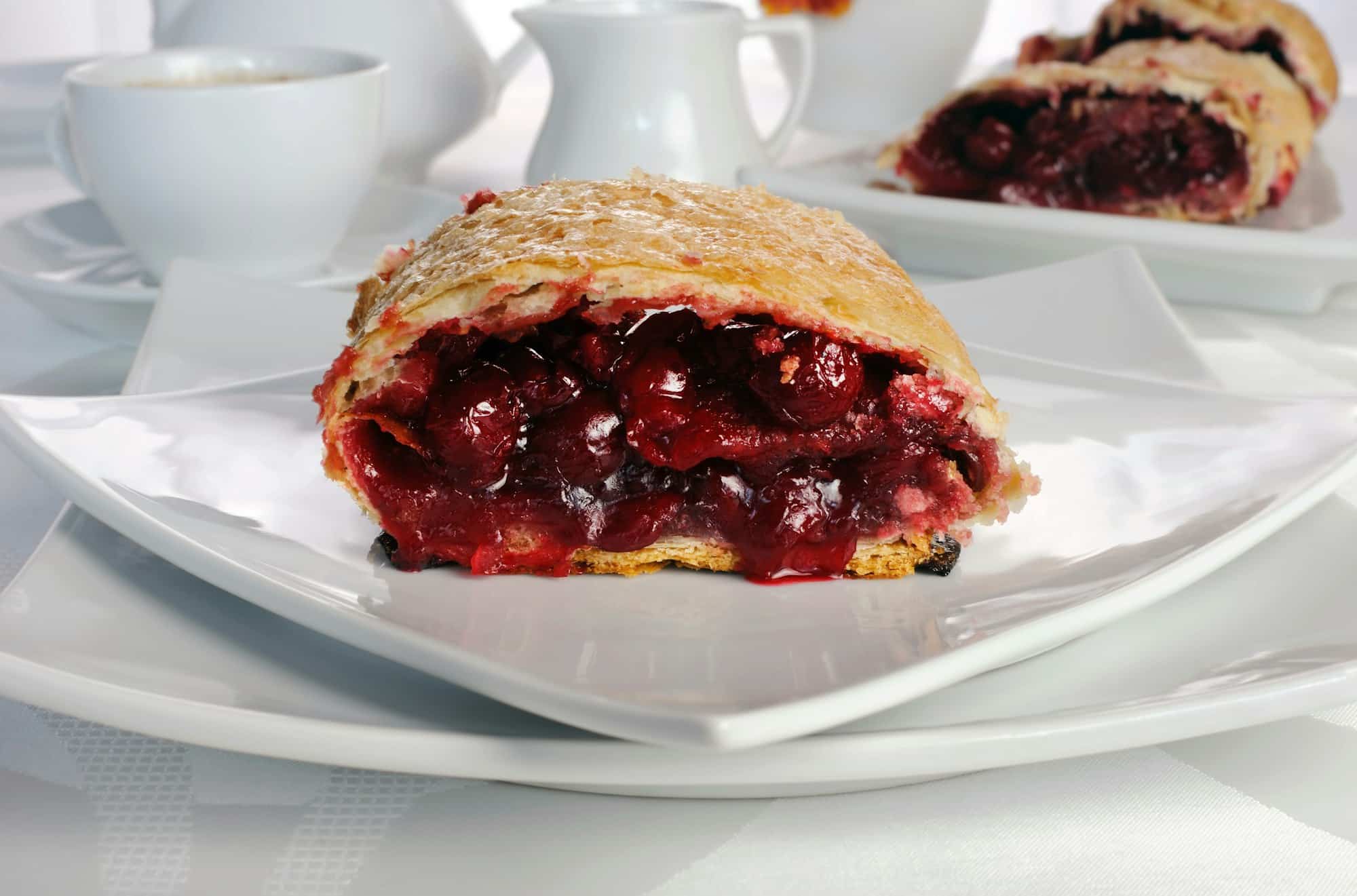Today, we will take you on a journey to the heart of German gastronomy. Get ready to uncover the secrets of making a classic German apple strudel. This iconic pastry, brimming with sweet apples, raisins, and a touch of cinnamon, is traditionally encased in a thin, flaky dough. The beauty of this recipe lies in its simplicity and the delightful contrast between the crispy pastry and the soft apple filling. By using homemade dough and the right blend of spices, you can recreate this age-old German dessert right in your kitchen. Clear your counters, preheat your oven, and let’s get started!
Choosing the Right Ingredients
Before embarking on this culinary adventure, it’s important to gather all the necessary ingredients. The quality of each ingredient will largely influence the final taste of your strudel. Here’s what you will need:
Lire également : Can You Master the Craft of a Gourmet Welsh Rarebit with a Sharp Cheddar Sauce?
- For the dough: flour, salt, vegetable oil, and water.
- For the filling: apples, sugar, lemon juice, raisins, cinnamon, and breadcrumbs.
- For the finish: melted butter and powdered sugar.
When it comes to apples, opt for tart varieties such as Granny Smith. These not only provide a pleasant contrast to the sweet filling but also retain their shape and texture throughout the baking process. As for the breadcrumbs, they serve to absorb the apple juice, thus preventing the dough from getting soggy while baking.
Preparing the Dough
The first step in assembling your strudel is to make the dough. Start by sifting the flour and salt together in a large bowl. Make a well in the center and add the vegetable oil and water. Then, using your hands, gradually incorporate the flour into the liquid until a soft, pliable dough forms.
En parallèle : What Techniques Can Make a Perfect French Bouillabaisse with a Seafood Medley?
Once the dough comes together, transfer it to a floured surface and knead it for about ten minutes or until it’s smooth and elastic. Be patient with this step, as the more you knead, the better your dough will be.
Wrap the dough in a clean cloth and let it rest for about an hour. This will allow the gluten strands to relax, making the dough easier to roll out later.
Building the Filling
While the dough is resting, turn your attention to the filling. Peel and core the apples, then slice them thinly. Toss them in a bowl with the sugar, lemon juice, raisins, and cinnamon. Let this mixture sit for about 30 minutes. The sugar will draw out the apple juices, which will add a deliciously sweet and tangy flavor to your strudel.
To make the breadcrumbs, melt some butter in a pan, add the breadcrumbs, and toast them until they’re golden brown. This not only adds an extra crunch to the filling but also ensures the breadcrumbs will absorb more apple juice.
Assembling and Baking the Strudel
After the dough has rested, it’s time to roll it out. Dust your work surface and rolling pin with flour and start rolling the dough as thinly as possible. Ideally, it should be so thin that you can read a newspaper through it.
Next, spread the toasted breadcrumbs over the dough, leaving a border around the edges. Arrange the apple mixture on top of the breadcrumbs. Fold in the edges, then carefully roll the dough over the filling, tucking it in as you go.
Place the strudel on a baking sheet, brush it with melted butter, and bake it in a preheated oven for about 40 minutes or until the pastry is golden brown and crisp.
Serving the Strudel
Once the strudel has finished baking, it’s time to let it cool slightly before dusting it with powdered sugar. Slice the strudel into generous pieces and serve it warm or at room temperature. For an authentic German touch, you can also serve it with a dollop of whipped cream or a scoop of vanilla ice cream.
Note that while the strudel is best consumed the day it’s made, you can store leftovers in an airtight container at room temperature for up to two days or in the fridge for up to a week.
Remember, the key to a perfect strudel lies in the dough, so invest some time in making it from scratch. The end result will be well worth the effort! Enjoy your homemade German apple strudel and don’t forget to share your culinary success with friends and family!
Troubleshooting Tips for the Best Strudel
In your quest to prepare the perfect apple strudel, you might encounter a few hurdles. Don’t worry. Here are some troubleshooting tips to help you navigate the process and achieve exceptional results.
Effort on the dough is critical in making a delightful strudel. If your strudel dough is too sticky, it means you’ve added too much liquid. Salvage it by kneading in more flour until it reaches the right consistency. Conversely, if it’s too dry, sprinkle some water and knead it in. Remember, the dough should be pliable and not stick to your hands or the working surface.
When rolling the dough, be gentle to prevent it from tearing. If it does tear, simply patch it up using a small piece of dough and continue rolling. The goal is to roll the dough to a thin layer. A nice tip is to use a clean tablecloth – dust it with flour, place your dough in the center and roll it out. The tablecloth helps in lifting the dough while rolling the strudel.
Overfilling your strudel may cause it to burst during baking. Stick to the proportions given in the recipe. If you have extra apple filling, use it for another pastry or freeze it for later use.
When baking, place your strudel on a parchment paper-lined baking sheet to prevent sticking and make clean up easier. If the top begins to brown too quickly while baking, cover it with aluminum foil to prevent burning.
Tweaking the Traditional Recipe
Traditional German apple strudel is a delight, but who says you can’t get creative with the recipe? Feel free to add your twist by incorporating other ingredients into the filling. For instance, try adding chopped nuts for an extra crunch or swap raisins for dried cranberries or currants for a different flavor.
You can also experiment with spices. Although cinnamon is traditionally used, you could add a pinch of nutmeg, cardamom, or allspice to bring a unique taste to your strudel.
For a richer flavor, serve your strudel with a vanilla sauce or drizzle it with caramel. A scoop of vanilla ice cream or a dollop of whipped cream on the side will also enhance your strudel eating experience.
Conclusion
Apple strudel is not just a dessert, it’s a cultural experience. This pastry, with its origins in Germany, has made its way into hearts and homes across the globe. It’s a testament to the power of simple ingredients, carefully chosen and thoughtfully prepared.
In many ways, making an apple strudel is an art. From preparing the homemade dough to delicately rolling it around the fragrant apple filling, each step requires patience, care, and love. But the result, a beautifully baked strudel, golden brown and dusted with powdered sugar, is most certainly worth the effort.
We hope that this guide has armed you with the knowledge and confidence to tackle this iconic pastry. Whether you stick to the classic recipe or add your own twist, the key is to enjoy the process. After all, baking is about more than just the final product; it’s about the joy of creating something delicious from scratch.
So, don your apron, gather your ingredients, and start crafting your very own German apple strudel. Who knows? This could become your next favorite baking project. Happy baking!











